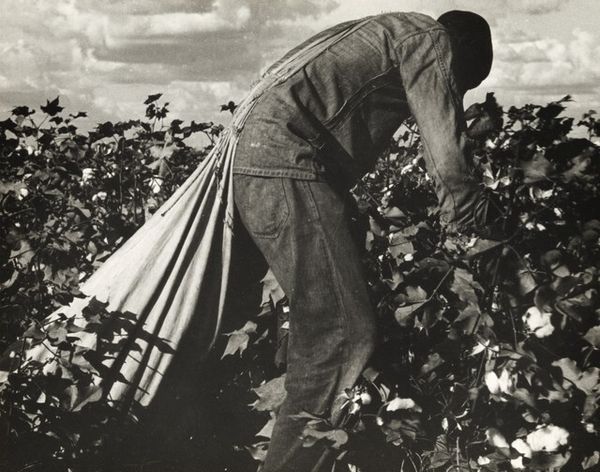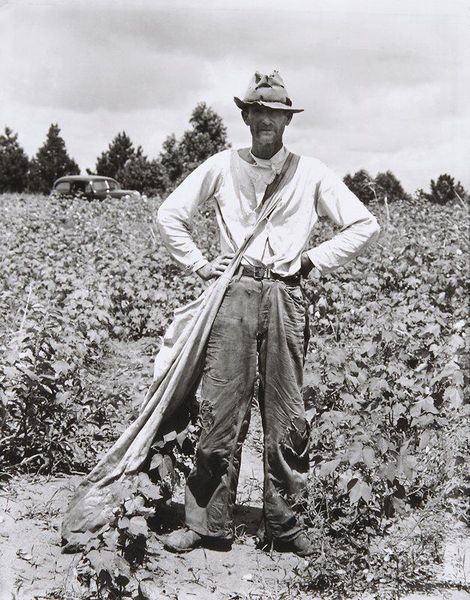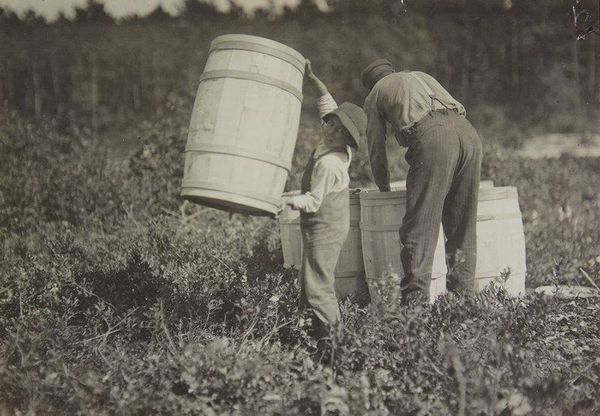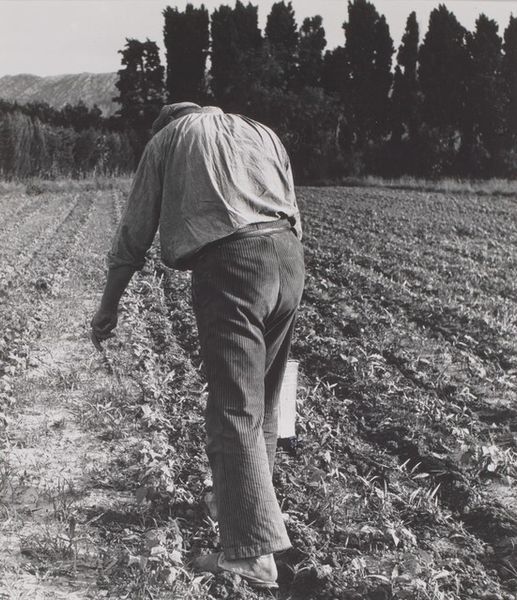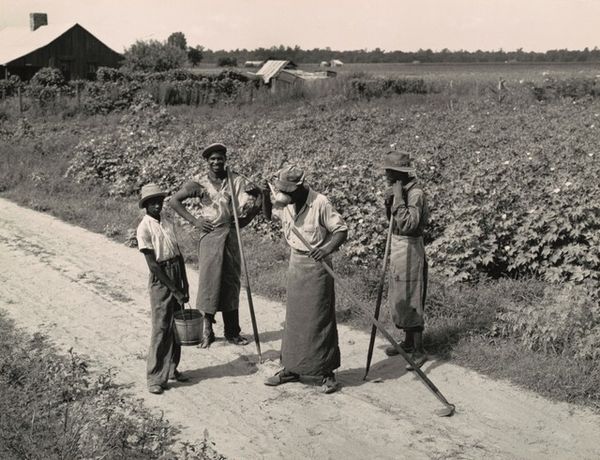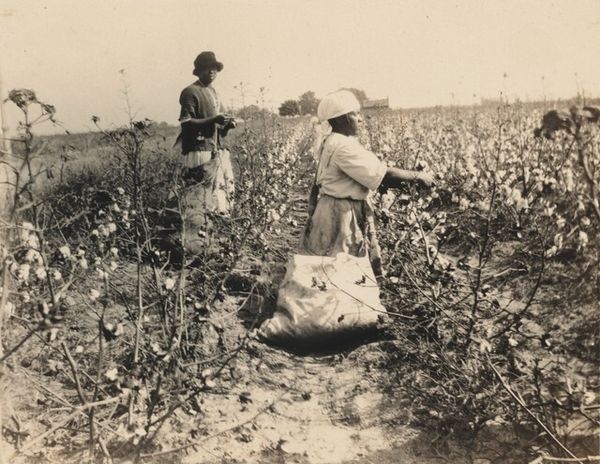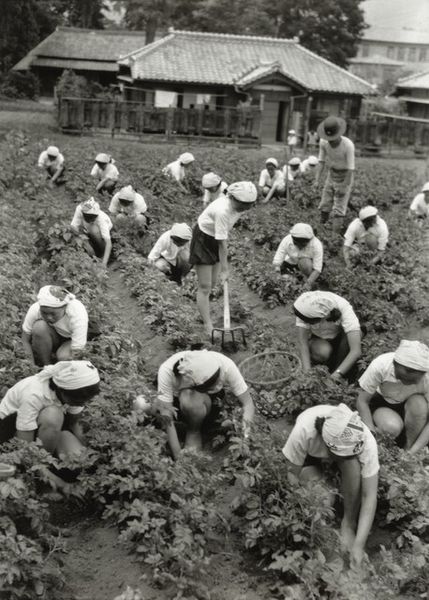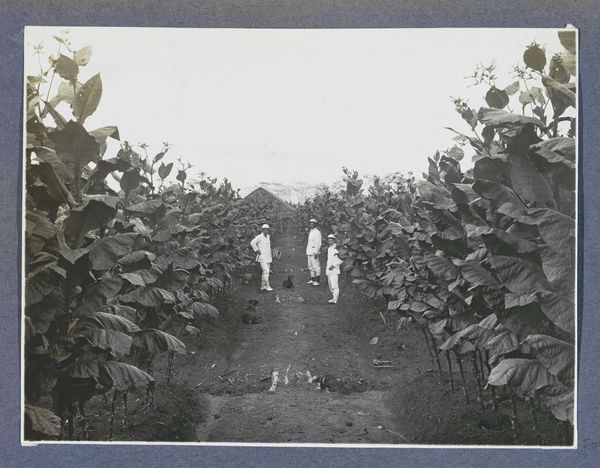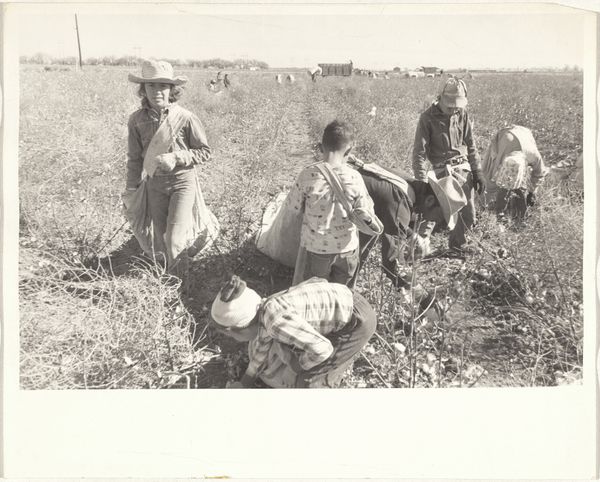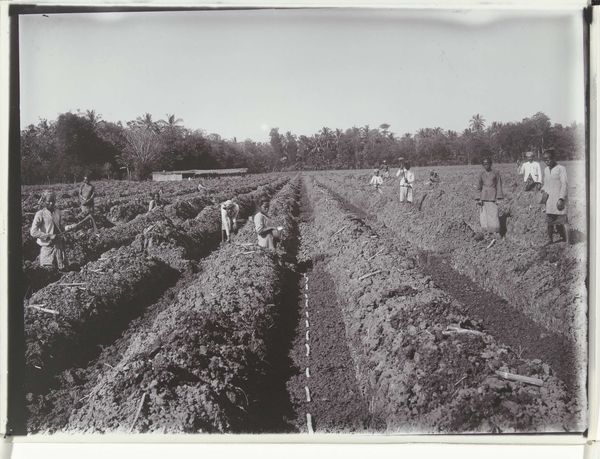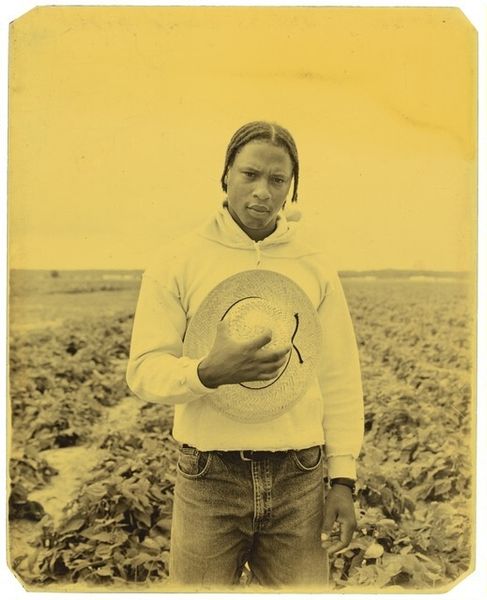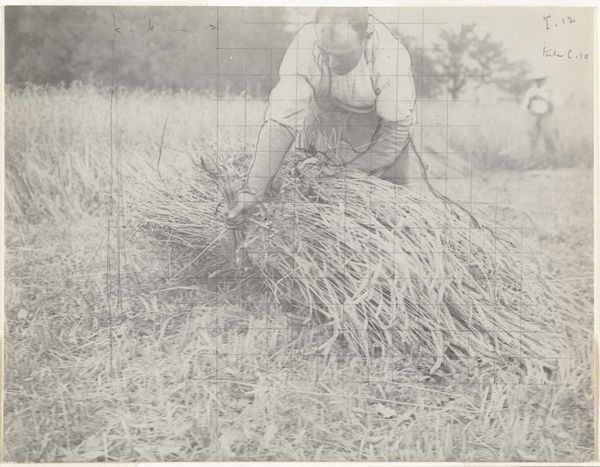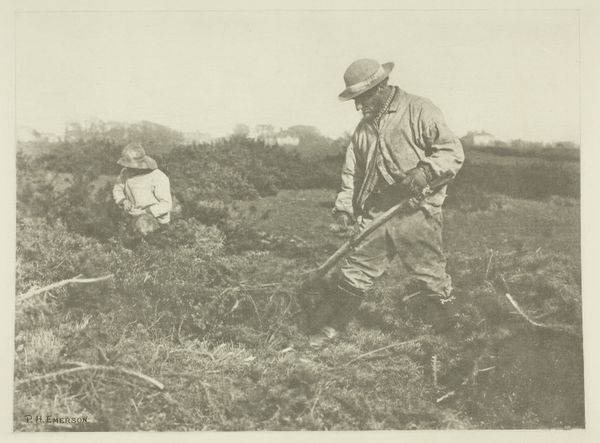
Migratory workers harvesting peas near Nipomo, California Possibly 1937
0:00
0:00
Dimensions: image: 19.4 × 24.5 cm (7 5/8 × 9 5/8 in.) sheet: 20.6 × 25.4 cm (8 1/8 × 10 in.)
Copyright: National Gallery of Art: CC0 1.0
Editor: This gelatin silver print, "Migratory Workers Harvesting Peas near Nipomo, California," is thought to have been taken by Dorothea Lange in 1937. It has this incredibly stark, almost brutal feel to it. What can you tell me about it? Curator: Lange's work is never simply aesthetic; it's always a deeply considered commentary on social and economic injustice. Looking at this photograph, we have to consider the historical context of the Great Depression and the Dust Bowl. How do you think that shaped the experiences of these workers and, consequently, Lange’s perspective? Editor: Well, knowing it was taken during that time definitely adds a layer of understanding. It emphasizes their vulnerability, like they are at the mercy of the land. The work looks incredibly arduous, too. Curator: Precisely. These were often displaced people, many fleeing ecological disaster. They faced discrimination, exploitation, and crushing poverty. Lange’s photographs become powerful documents, challenging the dominant narratives of the time. Notice how she frames the workers. Where does your eye go, and what impression does that create? Editor: I’m immediately drawn to the woman in the foreground. Her head covering hides most of her face, so you only see her hands and the plants. There's such a contrast between them. Her face and expression seem concealed intentionally to show, maybe, their loss of identity. Curator: That’s a crucial observation. Consider also the gendered aspect of migrant work. Women often faced additional burdens, both in the fields and within their families. How does that add to the complexities of this image, do you think? Editor: I see your point. It's not just about economic hardship but also about the layered oppressions experienced by women in that situation. I definitely view the photo differently now. Thank you for all your input! Curator: It’s a reminder that art isn't created in a vacuum; it's born from a particular moment, reflecting specific social and political realities, especially for those at the margins of society. I find myself learning a great deal as well through our conversations.
Comments
No comments
Be the first to comment and join the conversation on the ultimate creative platform.
